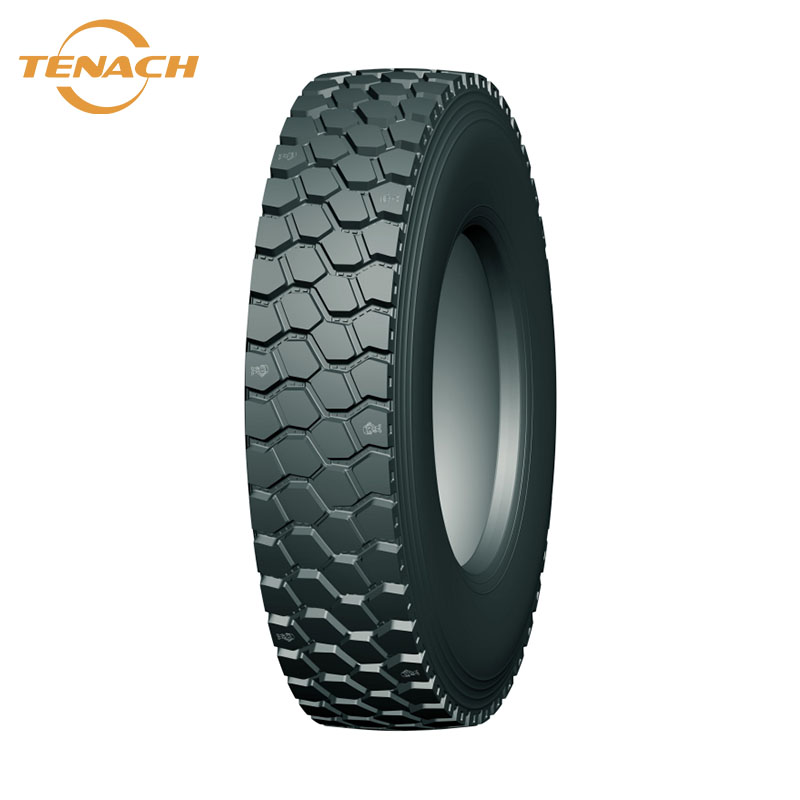Applications of Radial Tubeless Truck Tires
2024-06-13
Radial tubeless truck tires are a vital component in the transportation industry, offering several advantages over traditional bias-ply and tube-type tires. Here’s an overview of radial tubeless truck tires, covering their design, benefits, applications, maintenance, and considerations for selection:
Design and Structure
Radial Construction
1. Radial Ply Arrangement: The cords in the tire’s carcass run perpendicular to the direction of travel, providing flexibility and strength.
2. Steel Belts: Multiple layers of steel belts are placed beneath the tread to enhance durability and puncture resistance.
3. Sidewalls: The sidewalls of radial tires are more flexible than those of bias-ply tires, contributing to a smoother ride.
Tubeless Design
1. Inner Liner: A special air-retaining layer replaces the inner tube, reducing the risk of sudden deflation.
2. Bead Design: The tire bead fits tightly against the wheel rim, creating an airtight seal that maintains tire pressure.
Benefits
1. Improved Fuel Efficiency: Radial tires offer lower rolling resistance compared to bias-ply tires, leading to better fuel economy.
2. Longer Tread Life: Even tread wear due to the flexible sidewalls and strong belt construction extends the lifespan of the tire.
3. Enhanced Comfort: The flexible sidewalls of radial tires absorb shocks from the road, providing a smoother and more comfortable ride.
4. Better Traction and Handling: Radial tires maintain better contact with the road surface, improving traction and handling, especially in wet conditions.
5. Reduced Heat Buildup: The design helps dissipate heat more effectively, reducing the risk of blowouts and extending tire life.
Applications
1. Long-Haul Trucks: Ideal for long-distance travel due to their durability and fuel efficiency.
2. Heavy-Duty Trucks: Suitable for carrying heavy loads thanks to their strength and stability.
3. Construction and Off-Road Vehicles: Provide good traction and resistance to punctures and cuts.
4. Buses and Coaches: Offer a comfortable ride and improved safety for passengers.
Maintenance and Care
1. Regular Inspections: Check for tread wear, cuts, punctures, and other damage regularly.
2. Proper Inflation: Maintain correct tire pressure to ensure optimal performance and prevent premature wear.
3. Alignment and Balancing: Ensure wheels are properly aligned and balanced to avoid uneven tire wear.
4. Rotation: Regularly rotate tires to promote even tread wear.
5. Load Management: Avoid overloading the vehicle to prevent excessive strain on the tires.
Selection Criteria
1. Load Capacity: Choose tires that can handle the maximum load of your vehicle.
2. Tread Pattern: Select a tread pattern suitable for the driving conditions (e.g., highway, off-road, mixed).
3. Durability: Consider tires with reinforced sidewalls and steel belts for added strength.
4. Brand and Quality: Opt for reputable brands known for quality and reliability.
5. Cost: Balance between cost and the performance features required for your specific application.
Conclusion
Radial tubeless truck tires are a significant advancement in tire technology, offering numerous benefits for commercial vehicles. By understanding their design, benefits, and proper maintenance, you can ensure optimal performance, safety, and cost-efficiency for your fleet. Whether for long-haul trucking, heavy-duty applications, or passenger transport, these tires provide reliable and efficient service.



